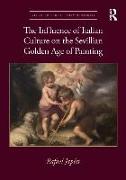- Start
- The Evolution of Judaism as A Philosophical Doctrine and Religious Order
The Evolution of Judaism as A Philosophical Doctrine and Religious Order
Angebote / Angebote:
In the opening chapter the questions that have plagued the study of Christianity and the subject of Jesus Christ, the secular man, are reiterated. The situation of description in the Gospel accounts is discussed in detail, since 18-27 years of Christ's personal history has been deleted from the record. These questions have lead to many, often opposing conclusions in an effort to fill that space.
The second chapter carries readers all the way back in time to the very first organized religion of mankind. This doctrine is labeled as The Order Of The Megalith. From the organization of these megalithic ruins, we can visualize the presence of a Temple Complex. Areas have been discovered where sacrifices have been conducted. Other areas indicate the presence of a residing body of priests, who were more than likely doctrinal philosophers appointed to justify the order of conviction, medics, counselors, caretakers of stored communal valuables, among other titles.
In the third chapter the subject of the Hebrew people being a tribe of Canaanites is discussed. From the primary order of conviction a break away splinter formed. This splinter developed its own doctrine, and converts to this doctrine organized their own holy city called Salem. Salem was ruled by a Canaanite King called Melchizedek. Melchizedek was both King and High Priest to the one and only God. From this king and High Priest, the patriarch, Abraham, would inherit the crown and the doctrine.
The doctrine was only known as Judaism during the reign of King David, who united the two provinces of Israel and Judah. What is interesting in this study is that only five kings out of seventeen embraced the doctrine of Isaac and Jacob, which changed from that of Abraham's day. The others seem to have been absorbed back into the doctrine of other Hebrew clans/the tribal Canaanite doctrine. It is highly questionable as to whether King Solomon even practised Judaism. This movement must be comprehended if one is to even visualize the person, life events, and angle of perception in the figure of Jesus Christ.
Each chapter is named after the patriarch sons of Abraham. I discuss the character of the individual person and the changes made to the doctrine, if indeed any were made. I also include information regarding not only the province of Judah to the south, but the province of Israel to the north. I discuss the differences in philosophy and doctrinaire. When the Assyrians conquered the north, strong evidence suggests that a majority simply migrated south and assimilated. Thus, a majority of the ten tribes were never lost.
Every detail discussed is of great importance, if we are to visualize the lifetime events and person found in Jesus Christ. Book two covers the phenomenon of Christ, where once we comprehend the history of Judaism we can then perceive the manifestation of Jesus Christ onto the scene of his times. Such is the reason I am in the process of publishing this record of Judaism as a doctrine and philosophy.
Three most notable key features that make my work stand out include, tracing out the philosophy and the doctrine of Judaism from the literature prospective of the patriarch leaders.
Folgt in ca. 10 Arbeitstagen




